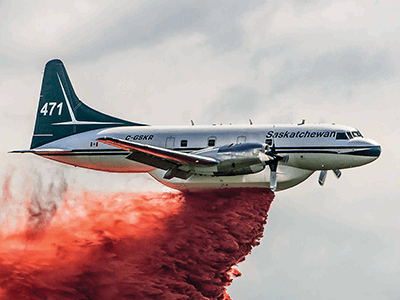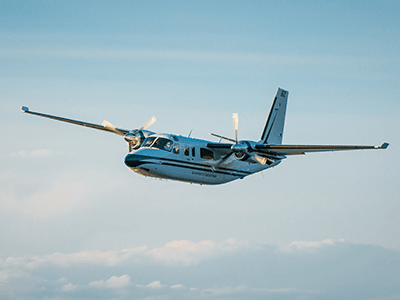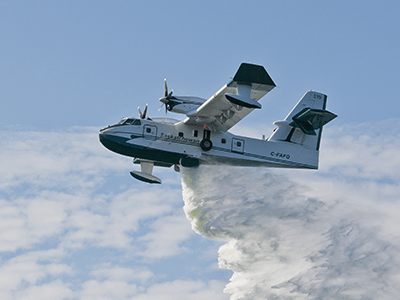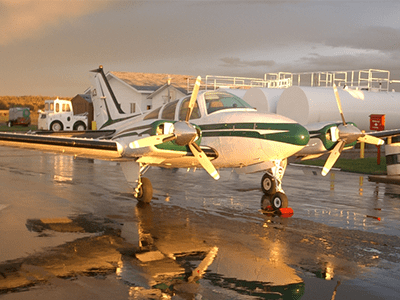SPSA Response Capacity
The SPSA has a wide range of emergency, ground and air protection personnel and assets trained and equipped to protect Saskatchewan communities, major public and private infrastructure, and resources, during threat of wildfire or other emergency.
Land Operations
SPSA land operations include a wide range of highly trained emergency and wildfire response professionals who provide an integrated approach to addressing emergencies and disasters.
Emergency Services Officers and Protection Officers
Emergency Services Officers (ESOs) and Protection Officers (POs) are highly trained to assist communities and first responders before, during and after large-scale emergencies or disaster. These officers play a key role in assisting communities to plan for and mitigate their unique risks.
Emergency Response Team
An Emergency Response Team (ERT) is a four-person team that is trained to assist local first responders in search and rescue, ice rescue, structural and wildfire response, local emergency management and to help set up onsite ICS structure, if required. These teams are available to assist local responders, upon request, if they have exhausted their mutual aid agreements or are in need of additional support.
Incident Command Teams
An Incident Command Team consists of highly trained personnel that can be deployed to oversee large-scale emergencies.
Logistics and Transportation
A critical component of the SPSA’s provincial response capacity is the ability to provide comprehensive logistics services to meet a variety of events or hazards.
The Logistics and Transportation Section has a wide variety of assets and equipment to support operational responses resources (e.g., heavy equipment, pumps, generators, water delivery systems, etc.).
These resources are made available to assist communities with its emergency response needs when appropriate, and communities and first response agencies
can access these resources through a Request for Assistance.
SPSA Response Crews (Type 1)
Type 1 crews consist of trained and experienced staff and are located in each SPSA Response Centre Area. These crews typically perform initial and sustained attacks on wildland fires, assist with helping communities respond to flooding and can provide support to a variety of responses, if able.
Type 1 crew leaders and crew members may also supervise Type 2 and Type 3 crews on sustained action fires. Type 1 firefighters have assisted other jurisdictions, provinces and countries during wildfire and other emergencies/events.
Find current seasonal employment postings here.
First Nations and Northern Community Crews (Type 2)
Type 2 crews are contracted through formal agreements with First Nations organizations and northern communities. These crews, located in various communities and reserves near or within the commercial forest, consist of five firefighters including the crew leader. Although primarily focused on wildfire, these crews can also be mobilized for other types of responses.
Type 2 crews provide firefighting and response services, as needed, and work on projects within their home communities in times of low fire danger. Type 2 crews are primarily used on sustained action fires. Type 2 crews may also assist Type 1 crews on the initial response to new wildfires.
Emergency Fire Personnel (Type 3)
Type 3 crews are made up of qualified firefighters hired on an emergency basis. These crews are used to support Type 1 and Type 2 crews working on sustained action wildfires and are normally used on a fire line that is under control or in the mop-up stage, or low in complexity and expected fire behaviour.
Air Operations
The SPSA provides land-based and amphibious wildfire tanker operations to suppress wildfires. Utilizing a modern, efficient and fast tanker fleet, Saskatchewan is able to deliver aerial services within the province, to other jurisdictions within Canada and to our other external partners.
Aircraft Fleet
The SPSA owns and operates a fleet of 10 air tankers and seven bird-dog aircraft.
Our fleet includes:
- Four Convair 580A land-based air tankers;
- Six CL-215T Turbine powered water-scooping air tanker; and
- Seven smaller bird-dog aircraft that guide the tankers and direct other air traffic over and near the wildfire.
The SPSA also depends on the contracting of helicopters and fixed-wing aircraft from commercial air carriers to help detect and suppress wildfires on a long or short-term basis. Interested aviation suppliers can find out more about providing service to the SPSA in the Contractors and Vendors section of our website.
Saskatchewan’s Aerial Fleet
Land-based Airtanker Group
This group typically consists of two CV 580As working with one Turbo Commander; however, tanker aircraft can be added or removed from the group as required. Aircraft will arrive with spare parts, satellite phone and resource tracking system. Typically, there will be five pilots, two Aircraft Maintenance Engineers and one Air Attack Officer.
Convair 580A (four aircraft)
- Speed 260 knots (300 mph)
- Twin turbine engines (Jet-A-fuel)
- Capacity – Up to 1,750 imperial gallons of retardant or approved Gel
- Latest technology constant flow tank
- Ability to load fire suppressant foam
- Traffic Alert and Collision Avoidance System II (TCAS) equipped
- ADSB – Out equipped

Bird Dog Turbo Commander (four aircraft)
- Speed 280 knots (320 mph)
- Twin turbine engines
- TCAS I equipped
- ADSB – Out equipped
- Excellent visibility
- Ability to transport four additional people

Amphibious Airtanker Group
This group typically consists of two CL-215T’s working with one Turbo Commander or a CL215 working with a Baron 55; however, tanker aircraft can be added or removed from the group as required. Aircraft will arrive with spare parts, satellite phone and a resource tracking system. Typically, there will be five pilots, two Aircraft Maintenance Engineers (AMEs) and one Air Attack Officer. In the case of a single CL215 group there would be three pilots, one-to-two AMEs and an Air Attack Officer.
CL-215T Turbine (six aircraft)
- Speed 180 knots (205 mph)
- Twin turbine engines (Jet-A-fuel)
- Capacity – 1,200 imperial gallons of water
- Two door bomb system
- Onboard injection of fire suppressant foam
- Ability to reload numerous times within a four-hour mission (25 per cent more than CL-215)
- Pickup cycle (approach/scooping/climb-out) distance of 4,100 feet
- Traffic Alert and Collision Avoidance System (TCAS) equipped
- ADSB – Out equipped

Bird Dog Turbo Commander (four aircraft)
- Speed 280 knots (320 mph)
- Twin turbine engines
- TCAS I equipped
- ADSB – Out equipped
- Excellent visibility
- Ability to transport 4 additional people

Bird Dog Beechcraft Baron 55 (3 aircraft)
- Speed 170 knots (195 mph)
- Twin piston engines
- Extremely maneuverable
- Ability to transport two additional people

For more information about the SPSA Aircraft fleet or any contractor inquiries,
please contact spsa@gov.sk.ca.
NOTE: As part of the SPSA fleet enhancement program, the SPSA will be retiring the last of the CL-215 piston Tankers in the Spring of 2022 upon the arrival of a CL-215T turbine Tanker. At this time the Barron 55 aircraft will begin to be phased out as the replacement Bird Dog Turbo Commander aircraft arrives.
Emergency Communications
Provincial Public Safety Telecommunications Network
Provincial Public Safety Telecommunications Network (PPSTN) is a public safety
radio network managed through a partnership between the SPSA, SaskPower
and the RCMP.
PPSTN provides public safety users such as fire departments, police services, emergency medical services, emergency preparedness and volunteer search
and rescue groups with interoperable radio communications that allows them
to communicate with each other during times of emergency.
Sask911
The Saskatchewan Public Safety Agency’s Sask911 system provides province-wide access to 9-1-1 emergency call taking. 9-1-1 calling is available from landlines and payphones in the province, and from cellphones and wireless devices if they are in range of a cell tower.
SaskAlert
SaskAlert stands as the emergency public alerting initiative of the SPSA, delivering essential real-time information about emergencies, empowering you to respond promptly and safeguard your community.
